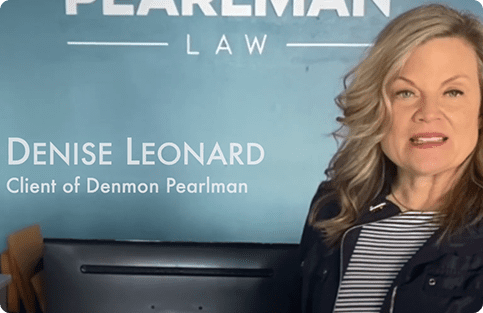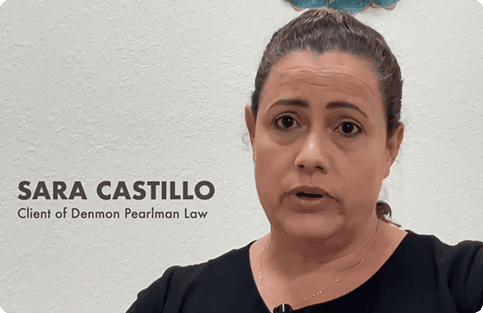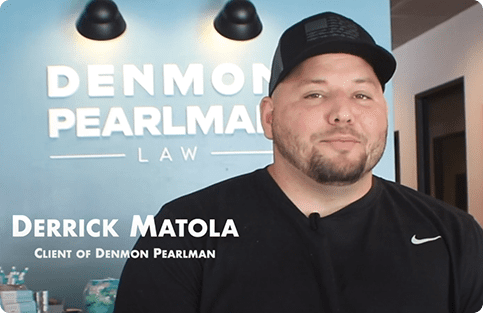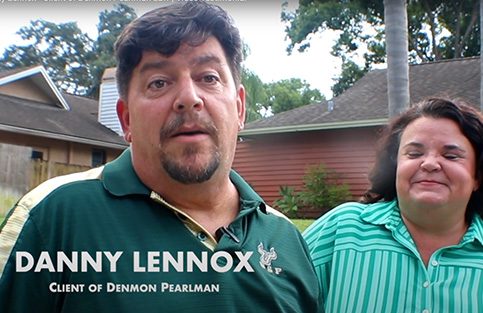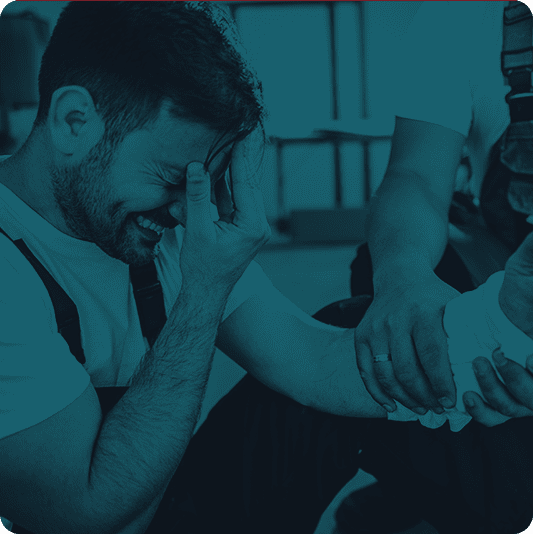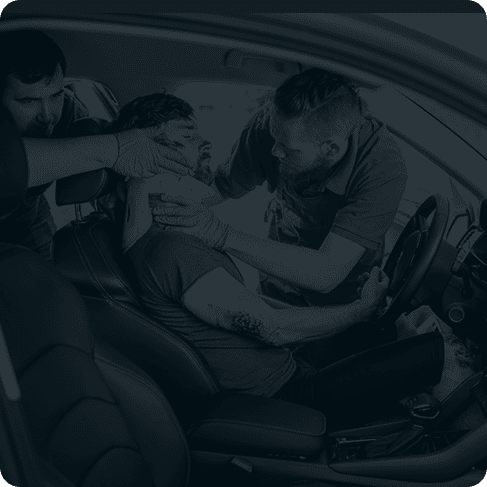When we’re valuing personal injury claims or calculating an injury settlement, we’re looking at a couple of different components and then we’re adding them all up to figure out what a dollar amount value will be for your claim.
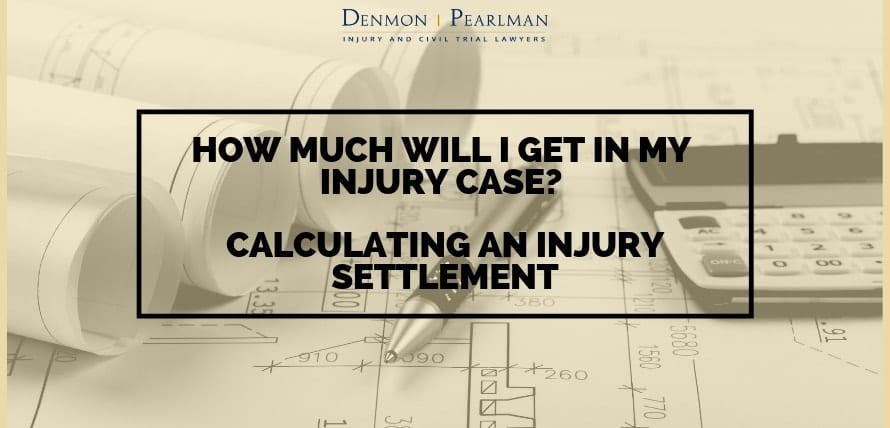
So, here’s what we’re looking at.
What Money Is Available?
The first question we have to answer is, “what is the money available?”
If you’ve been in an auto wreck and someone else caused the accident, but that person doesn’t have any insurance for whatever reason or they don’t have a penny to their name, then the value of the case is going be very limited because there isn’t any money to get.
On the flip side, if you’ve been in an auto wreck and the person who hit you has $1 million of insurance coverage, then you know that’s not going be an issue, okay. Then there’s going to be enough money available to compensate you for the full value of your claim.
What Are The Total Medical Bills In Your Case?
The second question we ask is, “what are the total medical bills in your case?”
So, a personal injury claim, by nature, has injuries. And injuries are treated in hospitals or urgent cares or by chiropractors or by orthopedists, and they’re all done in a medical setting and they all have medical bills associated with it.
These are economic damages and we want to know what the total economic damages are in your case, the total medical bills, and we also want to know what your total out of pocket is.
In other words, what has insurance covered or what has your Personal Injury Protection insurance covered if it’s an auto accident claim?
The success of any legal matter depends on the unique circumstances of each case, therefore, we cannot guarantee particular results for future clients.
What Are Your Lost Wages?
When calculating an injury settlement, we next want to find out what your lost wages are.
This is another sort of economic damage, right? It’s something that we can put an actual, to the penny, (dollar amount to) so we can figure out what your lost wages are.
And so, if you had to leave work under doctor’s orders and you weren’t able to work for a couple of weeks and you make 20 bucks an hour, then we can figure out the exact dollar amount of your lost wage claim.
What Is Your Pain And Suffering?
Now, the next question when calculating an injury settlement is, “what is your pain and suffering?”
And this is an intangible amount. It’s not like medical bills where we can say your pain was worth, to a penny, this particular number. It depends. And what it depends on is, how has this accident affected your life?
There are two different (areas) that we’re looking at.
One is, what are the things that you used to be able to do and you can’t do now? What has been taken from you? Maybe you used to go to the gym every day or maybe you used to run every day and now you can’t do that, and so that is part of pain and suffering that we’ll sit down and figure out a value to do the best we can to compensate you for what’s been taken from you.
Two is, what are the things that you still do because you have to do them, but they’re really hard to do right now? So, for example, if you have to work and you still have to go and drag yourself into the office every day or whatever it might be, but it hurts now. You have to do it, but it stinks for you now. It’s painful. The only way you can get through it is to take a bunch of pain medicine in the morning and then when you go home, you pay for it.
We call these, the technical term is duties under duress, but we want to know what those are because that’s a big portion of your pain and suffering claim and calculating an injury settlement.

What Is The Liability In Your Case?
The last question we want to know (the answer to) is, “what is the liability in your case?”
So, is it 100% clear that (in regard to) this injury that you have, that the accident was caused by someone else?
For example, you have your motor vehicle car wreck where someone runs a red light and plows into you while you’re just parked.
In that case, we know that liability’s 100% clear, right? It’s not your fault at all.
Or is it the situation where it’s vaguer, where maybe there was a sideswipe and it’s a little bit harder for us to prove the liability at 100% level? We will want to know that because of the factors in your claim.
And then it usually takes a few months for us to gather all this information because you don’t know the first week after an auto wreck what your total medical bills are.
You have to go to the doctor, you have to let them either get you 100% better or if they can’t get you 100% better, we have to get to the point where they say, “Listen, we’ve tried everything we can to get you 100% and we can’t.”
And this process can take three months, six months, whatever the case may be; that all depends on your treatment provider. So, we have to wait until that’s done.
When it comes to lost wages, you may not know a week after an auto wreck or a slip and fall how much time you’re going to lose.
It may take a few months for you to get an understanding of how it’s going to affect your work and how much money you’re going to be out of pocket.
And the same thing with pain and suffering.
You may not know right away exactly how it’s going to affect your life. You may think at the very beginning that maybe it’s just two weeks that you’re out of the gym or maybe it’s just a couple of weeks that you’re not going to be able to go to your kids’ sporting events — but as time goes on, you’ll have a better understanding if this is going to be a permanent thing.
Is this going to affect you for the rest of your life or is this something that’s going to be for a small period of time, but, ultimately, you’re going to get over it? And that factors in greatly when calculating an injury settlement.
What Is The Timeline In Calculating An Injury Settlement?
The timeline in calculating an injury settlement will depend a lot on your treatment providers and your doctors, but it’s usually somewhere between three and six months.
You will then come in and we will sit down to go through all of these factors and then come up with a number as to what the value of your case is going to be, and that’s what we’ll settle yours for.
And if the insurance attorney or the insurance adjuster does not agree with us and they refuse to settle with us, then we file a lawsuit.
Because, ultimately, this is your one shot to be compensated for what’s happened to you. And if you have permanent injuries and this is something that you’re going to live with for the rest of your life, then you need to make sure that you get fair value for your claim.
Our Personal Injury Attorneys
At our firm, our injury attorneys believe in getting the maximum value for every claim. We take every case on a case-by-case basis.
The reality is, it’s an imperfect world. It’s an imperfect system and the best we can do is to put a dollar amount on something that’s been taken from you and then fight to make sure you get the settlement you deserve.
Our Expertise
We have your back. Whatever you might be suffering from, accidents, injuries or medical malpractice, we have you covered throughout Florida
Let’s get in touch!
The initial consultation is absolutely FREE
Denmon Pearlman
Law
Tampa Office
2504 W Crest Ave
Tampa, FL 33614
(813) 554-3232
Denmon Pearlman
Law
St. Petersburg Office
520 2nd Ave South
St. Petersburg, FL 33701
(727) 493-5610
Denmon Pearlman
Law
New Port Richey Office
5703 Main Street
New Port Richey, FL 34652
(727) 753-0049
Denmon Pearlman
Law
Brooksville Office
1790 E Jefferson St.
Brooksville, FL 34601
(352) 309-7354
Denmon Pearlman
Law
Seminole Office
5290 Seminole Blvd. Suite D
St. Petersburg, FL 33708


